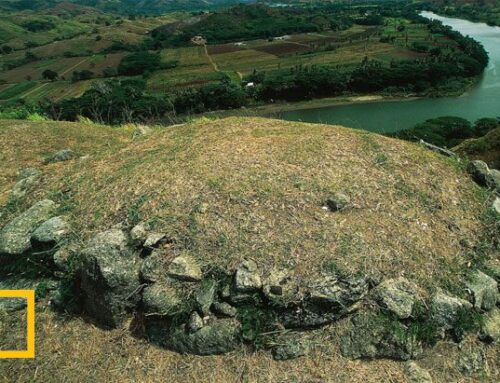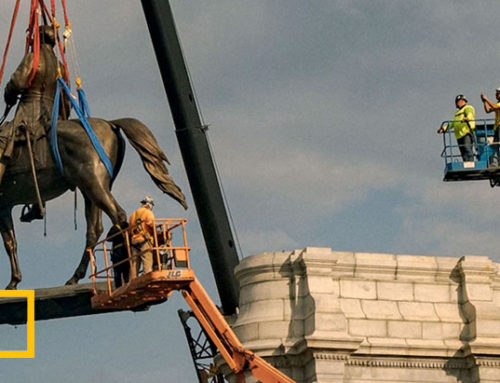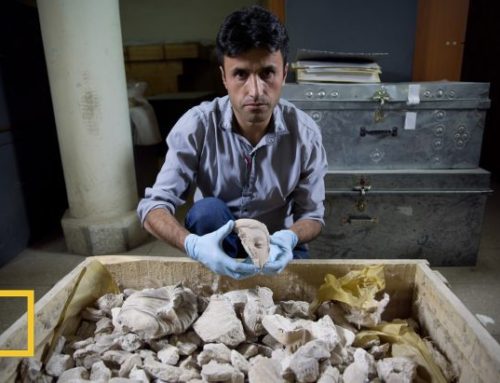
The luxurious yacht was built for Saddam Hussein in a style the Wall Street Journal called “Liberace Babylon.” It features staterooms, gilt furniture, and a secret escape hatch. Photograph by Angelos Tzortzinis, AFP/Getty
BASRA, Iraq After three decades of being passed around by Middle Eastern monarchs, Saddam Hussein’s yacht is now in the hands of Iraqi marine researchers.
Built for the then-president’s personal use in 1980, the 270-foot-long (82 meter) vessel boasts four decks, a bevy of gilt and mahogany furniture, and a secret bedroom with an escape hatch, dwarfing the two smaller boats that make up the rest of Iraq’s research fleet.
“It cost $25 million when it was commissioned,” Captain Hussein Ghazi Khalifa said on a recent tour of the yacht that went from the cavernous engine room to the helicopter pad. “Now it would cost four times that.”
The ship’s luxurious dining, sleeping, and sitting areas have been converted to accommodate scientists, but much of the décor is still intact. Its period smoked glass, clunky Panasonic televisions, and rococo china cabinet, all built in a style one commentator called “Liberace Babylon,” remain as the recently-rechristened Basrah Breeze explores the Persian Gulf’s changing biology and chemistry for the University of Basrah’s Marine Science Center.
It must be the world’s most extravagantly appointed research vessel. And it took an odd combination of geopolitics, economics, and happenstance to land the Basrah Breeze in its namesake port.

A salon is among the many luxurious rooms featured on the yacht. While some modifications have been made to accomodate researchers, much of the boat’s décor remains intact. Photograph by Mahan-Kalpa Khalsa
A Middle Eastern White Elephant
Even though he had it custom made for his own use, with a dozen bedrooms for guests, marble-tiled bathrooms, and a presidential suite that includes an office and a hair salon, Saddam Hussein never set foot on the yacht.
Originally called Qadissiyat Saddam (the name is a reference to a 7th century battle in which Arabs triumphed over Persia), the boat was built in Denmark at a time when Iraq—then an ally of the U.S.—was locked in a bloody fight with Iran. The boat couldn’t be safely delivered, and it ended up moored in Oman for years as the war dragged on.
In the mid-1980s, Hussein gave the boat as a gift to King Fahd bin Abdulaziz Al Saud of Saudi Arabia, who Khalifa says gave it the alluring name al-Yamamah, which he translated as Woman with Big Eyes. But the boat also has a big appetite. To power its two 3,000 horsepower engines and four generators on long journeys, the ship’s fuel tanks were built to hold 200 tons of diesel. At current prices, it would cost more than $100,000 to fill it up.
Even to an oil-rich ruler like Fahid, it must’ve seemed like a white elephant. He passed the ship to Jordan’s King Hussein. When the king died in 1999, his successor, Abdullah II, sent the ship to the south of France under ownership of a company based in the Cayman Islands but reportedly controlled by Jordan.
Then came the U.S.-led invasion of Iraq in 2003, which resulted in Hussein’s capture. He was executed three years later. In 2007, when the Cayman Islands company tried to sell the ship, the Iraqi government claimed ownership. Khalifa estimates the Iraqi government spent $1 million to secure clear title to the yacht, which a French court granted in 2008 after documents were found in the ship confirming it was still legally an Iraqi vessel.
A Ruler’s Folly Proves Research Boon
Attempts to sell the vessel foundered, and Iraqi officials had no choice but to bring it home. In 2010, the ship arrived in Basra with its current name and much fanfare.
“The return of the yacht means that the people’s will is stronger than the tyrant’s,” said then-Minister of Transportation Amer Abdul Jabbar at the celebration. “Saddam Hussein built this yacht to be used to his own personal purposes, but here it is returned to Iraqi people.”
But the boat didn’t get much use at first. Plans to turn it into a museum of Hussein’s excess—or a hotel that made use of the large staterooms, each with a different color scheme—were floated, but nothing came of them. The ship slowly rusted in the brackish waters of the Shatt-al-Arab on the Basra waterfront until 2014, when, according to Khalifa, well-connected professors from the University of Basra convinced the government to turn it over to them. At the time, Iraq’s modest research fleet had already made some important discoveries, such as the recent find that a coral reef is growing off the Iraqi coast. That’s a sign of increasingly clear and saline water at the head of the Persian Gulf, rather than the fresh and muddy outflow of the past, and it spells ill for the nation’s water supply and ecosystems.
In early 2015, the newest member of the Iraqi research fleet went on its inaugural research mission, carrying 75 Iranian, Kuwaiti, and Iraqi researchers into the Persian Gulf to study water quality and sea life. Two additional voyages have been made since. Although the decks show signs of weathering and the engine control room still uses early 1980s technology, the vessel appears surprisingly shipshape.

The bedroom built for Saddam Hussein is in the bow of the ship. The vessel has many additional bedrooms for guests, but they’re now being used by marine researchers. Photograph by Mahan-Kalpa Khalsa
Ali Douabul, a marine chemist at the Marine Research Center, said he hopes to use the Basrah Breeze for further studies of the coral reef and to survey the northwestern Persian Gulf. But the pockets of an Iraqi university can’t match those of an Arab monarch, even though researchers only use a small portion of the massive fuel tank for each mission.
“We want to sail in 2016, but the financial crisis prevents us,” Khalifa said. The captain added that he hope that international cooperation with wealthier countries along the Persian Gulf could help by splitting the fuel bill.
Sitting at the helm, looking across the sprawling city below, he sighed and looked wistful. “I love the sea,” he said. “It’s so much better on the open water. You are free from all the problems of the Earth.”
He just needs someone to help fill the tank.




